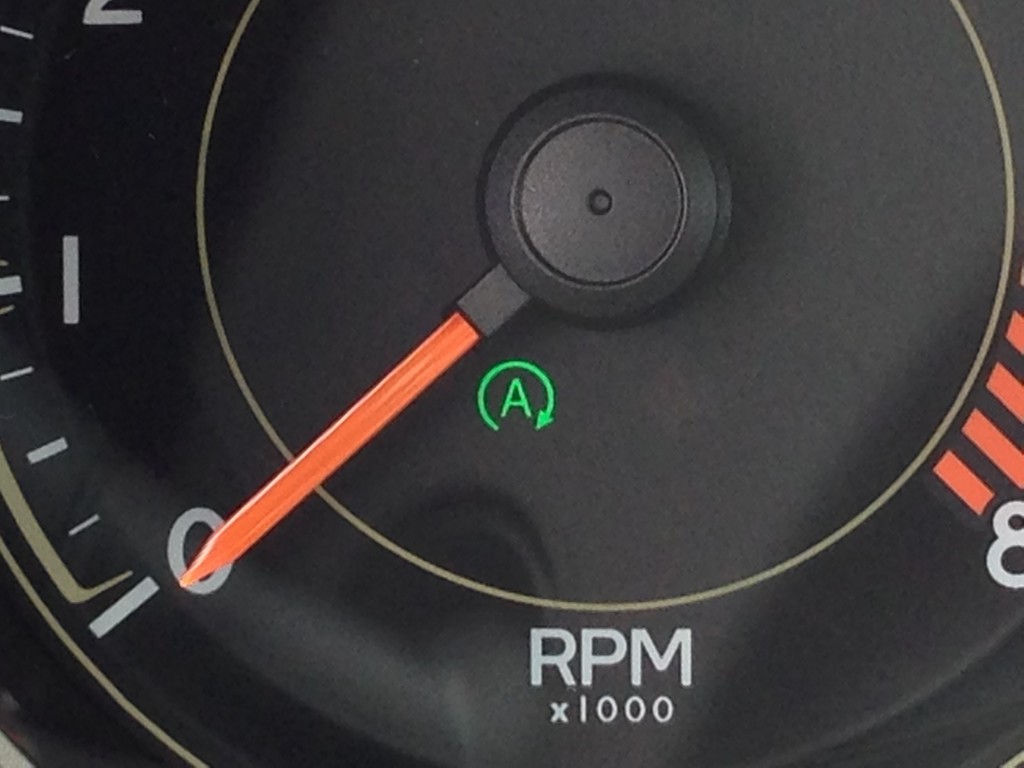Some are almost unnoticeable, others make the car shudder each time they activate—but stop-start systems are here to stay.
First rolled out in Europe and Asia, where crowded city driving requires cars to spend more time at a standstill, they switch off the engine when the car’s not moving. When the driver starts to lift a foot off the brake pedal, they quickly restart the engine in time for the car to move away from a stoplight or traffic jam.
Most such systems already keep the car’s accessories—lights, wipers, audio system, climate control—operating as standard. That limits the amount of time the engine can remain off, generally to a period between 45 and 90 seconds. But in stop-and-go traffic, that’s often enough to save significant amounts of fuel.
Stop-start systems were slower to come to the U.S., in part because they didn’t provide much advantage even in the EPA’s city-driving test cycle. Several years ago, Mazda’s Robert Davis suggested that the advantage might amount to 0.1 mpg on the EPA city cycle, an improvement that could be achieved at less cost using different technologies.
But the main question most car buyers have about new stop-start systems is: won’t they wear out my car’s starter motor?
The answer is no.
For an explanation of why, we reached out to a source in the auto industry who’s had a great deal of experience with these systems. This person asked that we keep him anonymous for a variety of reasons, among them that his current employer hadn’t approved his comments.
“Automotive engineers don’t use ‘traditional’ starter motors in these situations,” he explained. “The starter used for stop-start systems combines several technologies.”

Chrysler Engine Stop-Start (ESS) technology – slated for 2015 Jeep Cherokee
What follows is his explanation of those technologies, lightly edited by Green Car Reports for clarity and style.
(1) The gear ratio from the starter-drive pinion to the flywheel ring gear is optimized to make the starter’s motor turn more slowly. This can be done without materially changing the design of the transmission or flywheel at all on existing designs.
Crucially, this reduces starter-motor speed (in RPM), since 90 percent of starter-motor brush wear occurs not during cranking, but during the coast-down after the start has finished. If a higher-torque motor can spin more slowly, its coast-down time is shorter, increasing its longevity.
(2) The composition of the carbon and copper brushes on a stop-start motor differs from its traditional counterparts to increase longevity without accelerating the wear on the commutator.
(3) Rather than rely on oil-impregnated bushings for the rotating assemblies, stop-start starters mostly use needle bearings.
(4) The solenoid on stop-start starters decouples the mechanical action of engaging the drive pinion into the flywheel from the electrical action of stopping and starting the motor.
This allows for a dedicated design to turn power on and off to the motor, optimizing contact design and wear, against contacts that have to be integrated as part of a spring-loaded plunger.
This also reduces the electrical load requires to turn the engine, so that there is enough current available for accessories/lighting to operate during the start event.
(5) Finally, stop-start motors are integrated with other technologies that identify when each cylinder of the engine will reach top-dead center.
That lets the fuel injectors pulse and fire during the middle of a complete rotation of the crank, against having to wait for a complete revolution that lets the first cylinder reach that position to start the fuel-spark timing sequence.
And there you have it: the full technical explanation of why you don’t need to worry about starter motors wearing out prematurely due to stop-start systems.
Content Disclaimer and Copyright Notice
Content Disclaimer
The content provided on this website is sourced from various RSS feeds and other publicly available sources. We strive to ensure the accuracy and reliability of the information, and we always provide source links to the original content. However, we are not responsible for the content’s accuracy or any changes made to the original sources after the information is aggregated on our site.
Fair Use and Copyright Notice
This website may contain copyrighted material, the use of which has not always been specifically authorized by the copyright owner. We believe this constitutes a “fair use” of any such copyrighted material as provided for in section 107 of the US Copyright Law.
In accordance with Title 17 U.S.C. Section 107, the material on this site is distributed without profit to those who have expressed a prior interest in receiving the included information for research and educational purposes. If you wish to use copyrighted material from this site for purposes of your own that go beyond fair use, you must obtain permission from the copyright owner.



